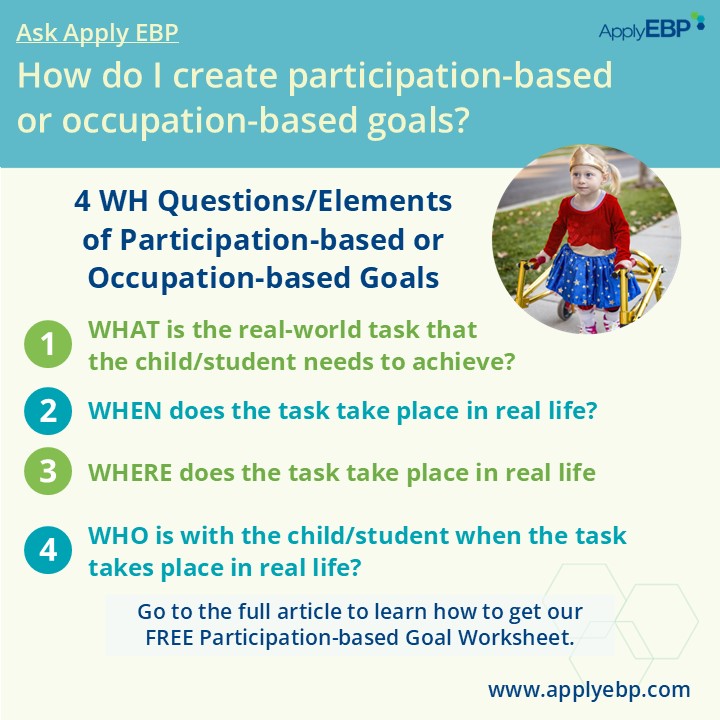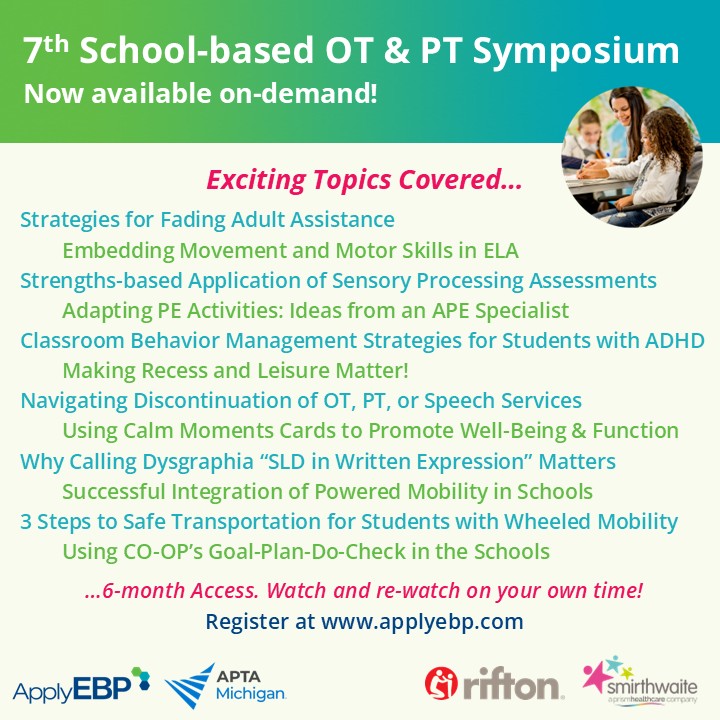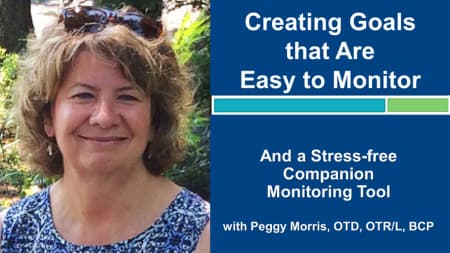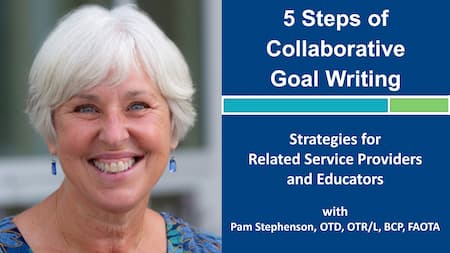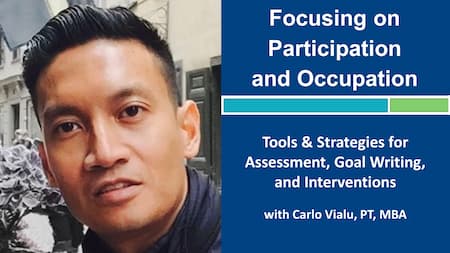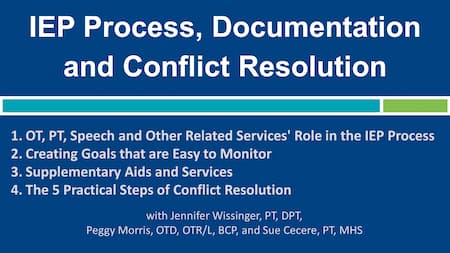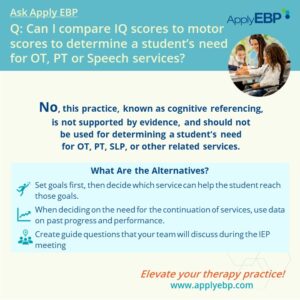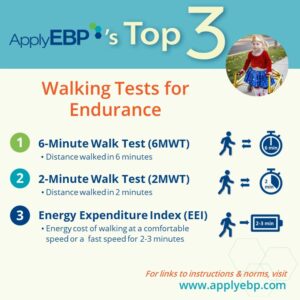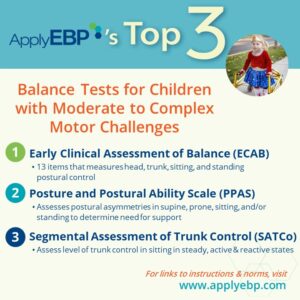Ask Apply EBP
4 WH Questions/Elements of Participation-based Goals, Plus a Free Goal Worksheet!
Q: How do I create participation-based/occupation-based goals?
This is one of the most-commonly-asked questions from our workshops. So we would like to give you this simple resource to jump-start your creation of participation-/occupation-based goals. The objective of this article is not to teach you how to write the “perfect” goal, as there is no such thing. Rather, this article will get you on the right path towards better and more meaningful goal-writing.
-
-
- Note that participation-based is synonymous with occupation-based goals. In this article, we will use the term “participation-based” to refer to both, for ease of discussion.
-
3 Powerful Reasons for Creating Participation-based Goals
While non-participation-based goals are not inherently bad, they might be most effective when targeting clinical outcomes, like increasing ankle range of motion when serial casting or enhancing dexterity post-surgery.
However, participation-based goals remain paramount! They showcase tangible improvements in our pediatric clients’ daily lives. This is particularly true in school-based and home-based settings, where our focus revolves around school and home functions and active participation.
There are plenty of great reasons to write participation-based goals, here are just 3:
-
-
- Participation is meaningful to children!
- Vroland-Nordtrand et al (2016) found that, when asked, parents tend to come up with goals around increasing independence in their children’s ADLs (e.g., toileting, dressing). While children “identified several goals that could increase their opportunities to participate with peers,” for example in leisure or school work.
- We can therefore say that creating goals that are participation-based would be more aligned to the child’s own goals and, thus, be more motivating for them.
- As therapy practitioners, we are most effective in improving participation!
- Many children we work with have lifelong disabilities. They have impairments that are not malleable via OT, PT, or Speech services. In addition, treatments aimed at fixing impairments are less effective than “skill-based training and therapeutic practice in the context of valued occupations” (Cahill & Beisbier, 2020), especially at improving activity performance and participation (also, Blank et al, 2019; Novak et al, 2020). We can often help our clients bypass their impairments to improve their participation.
- By writing participation-based goals, we are highlighting what we are most effective in – helping children participate in real-life skills with their peers!
- Focusing on participation adheres to the intent of IDEA!
- The purpose of the Individuals with Disabilities Education Act (IDEA) is “to ensure that all children with disabilities have available to them a free appropriate public education that emphasizes special education and related services designed to meet their unique needs and prepare them for further education, employment, and independent living”
- Education, employment and independent living are all at the level of participation! Therefore, by creating participation-based goals, we are more likely to be addressing and preparing them for these real-life outcomes.
- Participation is meaningful to children!
-
6 Red Flags of Non-Participation Goals
To start improving your goals, let’s begin by selecting a current student goal and examining it closely. Like a detective, be on the lookout for the following red flags of non-participation goals:
-
-
- Does the goal focus on splinter skills?
- Examples: connect dot-to-dot; stand on one leg; cross midline; tracing a line; switch from one leg to the other in a half-kneel; in-hand manipulation
- As you may notice above, these often sound like intervention strategies.
- Does the goal contain medical jargon?
- Examples: visual motor integration; sensory processing; proprioception; range of motion; coordination; seating endurance, body awareness
- Some of the above do not even sound like medical jargon. But if others in the team do not know how to objectively observe and measure them, there’s a good chance you are using medical jargon.
- Does task completion occur in isolation or in a therapy room?
- Example: walk an empty hallway, catch a ball thrown by an adult
- Often, these goals may not explicitly mention the ‘therapy room.’ However, upon closer examination, one would recognize that achieving the goal is only feasible within the confines of a therapy room or a similarly isolated setting.
- For example:
- tie and untie shoes 2 out of 3 consecutive trials – you know that they will not be asked to tie/untie shoes 3 consecutive times in the classroom
- remove 10 beads from a putty – an activity that is more common in a therapy room
- Does the goal include materials or equipment that are not present in the classroom or other real-life environments?
- Examples: balance beam, putty (when it’s not a material that is typically used in class)
- Does it contain a test item?
- Especially, if the items are from a non-participation level test, such as the PDMS, BOT, VMI, DTVP
- Examples: jump forward 12 inches; draw a line through a curved path; walk forward heel-to-toe
- Does the goal contain the phrase “in order to”, “so that”, or something similar?
- Use of these phrases is typically an attempt to make a splinter skill sound like a participation-based goal
- Examples: improve visual-motor skills in order to independently write 4 legible sentences; demonstrate improved eye-hand coordination so that he can participate in PE
- Try crossing out the phrase before “in order to” or “so that”, and often you are left with the participation-based task! Yay – you’re almost there!
- Does the goal focus on splinter skills?
-
Did you find any of the above? Then it is likely that you have a goal that is not yet participation-based. Now let’s improve on that goal.
The 4 WH Questions/Elements of Participation-based Goals
Creating participation-based goals are easier than you think. Here are 4 elements that you will find in a participation-based goal:
-
-
- WHAT is the real-world task that the child/student needs to achieve?
- Class work
- ADL (e.g., dressing, toileting)
- Recreational skills (e.g., individual or team games, use of playground equipment)
- Work routine, for older students
- WHEN does the task take place in real life?
- During ELA (or another subject)
- In recess
- Upon arrival
- Mealtime
- Dismissal
- Circle time
- WHERE does the task take place in real life?
- Classroom
- Gym
- Playground
- Cafeteria
- Stairs
- Hallway
- WHO is with the child/student when the task takes place in real life?
- Classmates
- Peers
- Adults
- Colleagues (for those participating in work routines)
- WHAT is the real-world task that the child/student needs to achieve?
-
Combine as many of those 4 elements and you are on the right track towards creating participation-based goals. How many (and which) of the 4 elements do you see in the following? (answers at the bottom of this article).
-
-
- …write a paragraph with at least 4 sentences with 80% word legibility during journal writing time in the classroom, as measured by the teacher…
- …play a game that requires jumping or running (e.g., hopscotch, tag) with peers in the playground during recess
- …independently put on and zip her jacket in the classroom prior to dismissal…
- …independently use crutches to walk a busy hallway from the classroom to the lunchroom…
- …use a communication device to indicate his food choices to the cafeteria server during lunchtime…
-
Want a FREE Worksheet for creating Participation-based Goals?
Join Apply EBP’s Facebook Discussion Group by clicking here where you can download one from the group “Files” section.
Take-aways
Here are 3 key take-aways:
-
-
- Participation-based goals are best practice – children want them, we are most effective in addressing them, and we are adhering to the intent of the law.
Review the current goals of your clients to find tell-tale signs of non-participation-based goals.
Combine the 4 WH elements of participation-based goals - Making goals participation-/occupation-based is a significant step towards crafting more effective goals.
- Participation-based goals are best practice – children want them, we are most effective in addressing them, and we are adhering to the intent of the law.
-
There are additional strategies that you can employ, such as ensuring the goals are SMART, making them easy to monitor, and creating collaborative goals. If you want more information on these, join…
Peggy and Carlo’s live Creating Goals that Are Easy to Monitor, Peggy’s 1.5-hour on-demand webinar of the same title, or Pam ‘s 5 Steps of Collaborative Goal Writing.
References:
Blank, R., Barnett, A. L., Cairney, J., Green, D., Kirby, A., Polatajko, H., … & Vinçon, S. (2019). International clinical practice recommendations on the definition, diagnosis, assessment, intervention, and psychosocial aspects of developmental coordination disorder. Developmental Medicine & Child Neurology, 61(3), 242-285.
Cahill, S. M., & Beisbier, S. (2020). Occupational therapy practice guidelines for children and youth ages 5–21 years. The American Journal of Occupational Therapy, 74(4), 7404397010p1-7404397010p48.
Individuals with Disabilities Education Act (IDEA) website: https://sites.ed.gov/idea/about-idea/
Novak, I., Morgan, C., Fahey, M., Finch-Edmondson, M., Galea, C., Hines, A., … & Badawi, N. (2020). State of the evidence traffic lights 2019: systematic review of interventions for preventing and treating children with cerebral palsy. Current neurology and neuroscience reports, 20, 1-21.
Koch, K. A. (2020). “The Voice of the Parent Cannot be Undervalued”: Pre-Service Teachers’ Observations after Listening to the Experiences of Parents of Students with Disabilities. Societies, 10(3), 50.
Vroland‐Nordstrand, K., Eliasson, A. C., Jacobsson, H., Johansson, U., & Krumlinde‐Sundholm, L. (2016). Can children identify and achieve goals for intervention? A randomized trial comparing two goal‐setting approaches. Developmental Medicine & Child Neurology, 58(6), 589-596.
Answers to the activity above:
-
-
- 3 are explicit: What, Where, When; Who is implied – by being in the classroom during journal writing time, she is performing this activity with her classmates
- All 4: What, Who, When, Where
- 3 are explicit: What, Where, When; Who is implied – by being in the classroom prior to dismissal, it is likely that she is doing this at the same time as her classmates
- 3 are explicit: What, Where, Who; When is implied – it is likely that this is occurring prior to lunch time
- 3 are explicit: What, When, Who: Where is implied – this is in the lunchroom!
-
Find More Answers to Your Questions in Our...
Featured School
Symposium
7th Online School-based OT and PT Symposium - On-Demand Version
- Watch and re-watch on your own time
- On-Demand Version
- OTs, OTAs, PTs and PTAs
- $399-449
Featured Live
Workshop
6th Online School-based OT and PT Symposium - On-demand Version
- Watch and re-watch on your own time
- On-Demand Version
- OTs, OTAs, PTs and PTAs
- $399-449
Featured On-Demand
Webinar
Focusing on Participation and Occupation
Featured Webinar
Bundle
The IEP Process, Documentation & Conflict Resolution Bundle
Have a question?
Submit here…
*Clicking submit will send your question directly to our email inbox. Your name and email will let us know that your submission is real (not spam). We will not include these in our posts, unless you tell us to include your name. Please read our privacy policy here.
All infographics and videos on www.applyebp.com are intellectual properties of Apply EBP, LLC
You may use the infographics and videos for free for any non-commercial, educational purposes. Please cite the source as “Apply EBP, LLC” and a link to the source article. If you plan to use any infographic or video for commercial purposes (i.e., for profit), please email Carlo@applyebp.com to obtain a written permission. Permission can be granted on a case-by-case basis.

